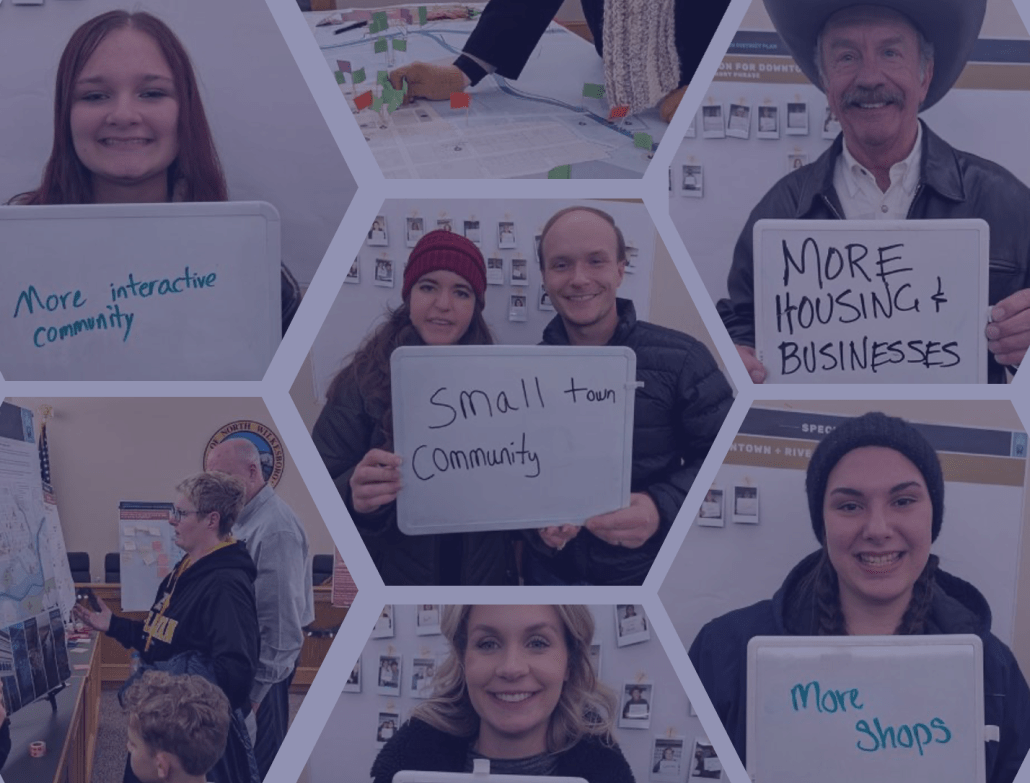What's the secret to planning and designing the most lovable, enjoyable parks? Asking the community!
Or better yet, providing a visual and engaging participatory design process that will "wow" clients and community members.
For the Parks and Recreation Master Plan for Amherst County, Virginia, Hill Studio's planning and landscape architecture teams did just that. The Virginia-based boutique consultancy organized pop-up booths, online engagement, and focus groups to produce a meaningful and impactful community design process. Matthew Lindsay, community planner at Hill Studio, shares how the community's ideas were sometimes unexpected (good thing they asked!), but the digital map-based results were clear and specific.
Maptionnaire has given us a good tool to visually see where people want things…. I'm a visual person. It helps me understand where things fit together
Matthew Lindsay, Community Planner at Hill Studio
The playful engagement strategy
From the start, Amherst County was already motivated to engage communities in the park master planning process. They wanted to strengthen the community's connection to their existing parks and explore the possibility of planning new parks. There were so many questions that only locals could answer: What's special about each park? Why do people visit? What unlocked potential is there?
Hill Studio worked closely with Amherst County, strategizing their community engagement to answer these questions. There had to be options for in-person and online interactions, possibilities for quick responses and deep conversation, and straightforward visual results for everyone to share. Online map-based interaction was a must.
They chose a mix of questions and mapping games to share in several formats: online, at community events, and in smaller focus groups.
Pop-up booths
Early in the process, Hill Studio popped into a few community events. They showed posters and offered a simple mapping activity, where participants could pin a new park amenity onto a physical park map. It was a great way to collect ideas and start conversations. Just chatting with community members was especially fruitful. Participants suggested some new amenities—padel courts and bottle refill stations—that Hill Studio had initially missed.

Map-based questionnaire
The map-based questionnaire – or maptionnaire – was available online throughout the community engagement process. The Maptionnaire platform enabled Hill Studio to design an even more fun, precise, and in-depth mapping activity than the physical poster version.
Here's how: The short-and-sweet park designing game gives respondents a 10-point "budget" to spend on amenities for their Amherst County parks. Respondents place their selected amenities on a digital map of their local park, indicating their precise locations. They can suggest locations for a variety of high- and low-cost amenities, but they must prioritize to stay within their budget. In the video below, you can see the park-planning game in action.
Since the Maptionnaire platform is user-friendly and runs in-browser on any device, responding was easy for community members. And because it's flexible on the back end, Hill Studio could also make live updates to the maptionnaire, adding those ideas they got from the pop-up events.

No special skills or GIS knowledge is needed to review, analyze, and download results. Everything is easily accessible in Maptionnaire's in-browser app. For the Amherst County project, the team decided to export and plot data points into ArcGIS, where they could combine digital survey data with the results from in-person activities. "That's been very easy, very convenient to use," says Matthew.
Focus groups
Near the end of the community engagement process, Hill Studio circled back to key community groups. Findings from the maptionnaire and pop-up interactions set the playing field for meaningful focus group discussions. For example, after learning about the need for play spaces, they held a co-designing session with the local homeschooling groups.
.jpeg)
The impact of participatory design
Ultimately, the pop-ups, maptionnaire, and focus groups all worked together and fed into one another, pointing Hill Studio's planning and landscape team in the right direction. Their blend of digital and traditional participatory design proved impactful in several ways:
- Community members shared relevant new ideas. Being experienced parks & recreation planners, Hill Studio's planners knew to expect requests for some amenities, but they nevertheless encountered surprises. "Water bottle refill stations were one that we didn't initially think about, but something that people really wanted," Matthew reflects.
- Playing within a budget revealed priorities. When respondents can only pick one top amenity, it can be tempting to jump for the big-ticket items like sports fields. This was different. Maptionnaire's tool for prioritizing resources on a map—geobudgeting—showed that the Amherst County communities surprisingly often prioritize lower-cost amenities, like those water bottle refill stations. Check out how this Finnish city also used geobudgeting to understand neighborhood priorities for a park design.
- Mapping clarified locations. Knowing what the community wants is only part of the story. Local suggestions for where to locate park amenities were invaluable for the planning and landscape architecture teams.
- High-quality interactions strengthened the relationship between the county and its residents. The Maptionnaire platform's sleek appearance and user-friendliness left a really good impression, boosting the county's reputation for engaging residents. "Having the nice visuals and the interactive maps is showing that the county is putting a lot of effort into engaging the community… I've had multiple people say, 'Wow, I hope the county keeps using this,'" says Matthew.








.jpeg)
.webp)
.webp)


.webp)
.png)















































